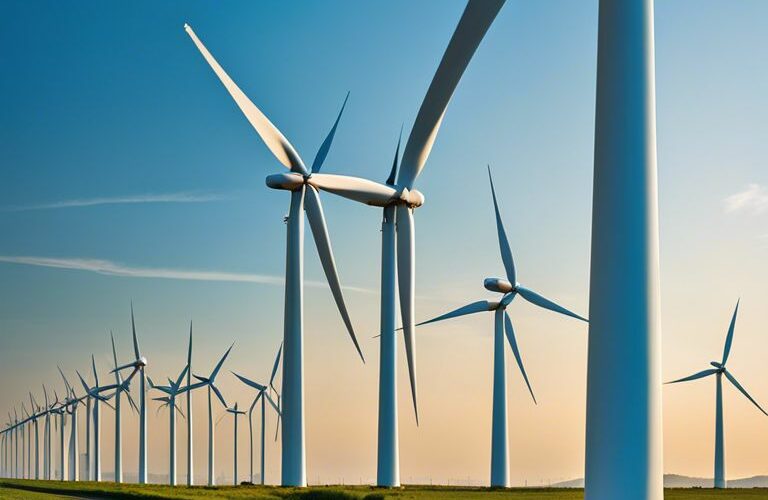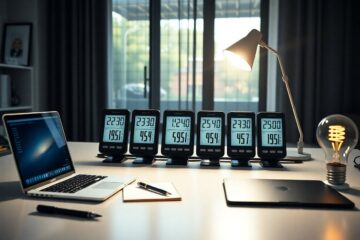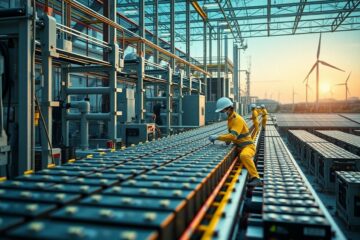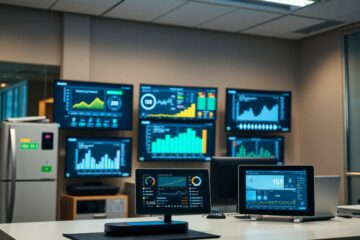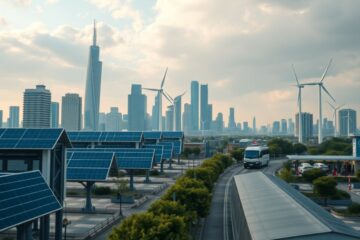Eschewing the traditional methods of energy production, wind turbines have emerged as a sustainable alternative, harnessing the power of wind to generate electricity. This innovative technology presents a myriad of benefits such as reduced greenhouse gas emissions, renewable energy generation, and economic growth. However, it also comes with its own set of challenges and drawbacks, including noise pollution, visual impact, and wildlife hazards. In this blog post, we will delve into the pros and cons of wind turbines, providing a comprehensive understanding of their impact on the environment and society.
Table of Contents
The Mechanics of Wind Power
For centuries, wind has been a source of power, utilized by humans for various purposes. Today, we harness the power of wind through the use of wind turbines. These towering structures are designed to capture the kinetic energy of the wind and convert it into usable electricity. Understanding the mechanics of wind power is crucial in appreciating the potential and limitations of this renewable energy source.
How Wind Turbines Work
To understand how wind turbines work, it’s essential to grasp the basic components and functions. At the core of a wind turbine is the rotor, which consists of blades attached to a hub. When the wind blows, it causes the blades to rotate, spinning the rotor. This rotational motion is then transferred to a generator, where it is converted into electrical energy. The generated electricity is then transmitted through a series of transmission lines to the power grid for distribution to consumers.
Wind turbines come in various designs, each with unique characteristics and applications. The most common types of wind turbines include horizontal-axis and vertical-axis turbines. Horizontal-axis turbines are the traditional three-blade structures, while vertical-axis turbines have a more compact, vertical orientation. After evaluating the site-specific factors such as wind speed and terrain, the appropriate turbine type is selected for installation.
- Horizontal-axis: Traditional design, high efficiency, dominant in the market.
- Vertical-axis: Less common, suitable for turbulent wind conditions, lower efficiency.
| Types of Wind Turbines | Characteristic |
| Horizontal-axis | Traditional design, high efficiency |
| Vertical-axis | Suitable for turbulent wind conditions, lower efficiency |
Plus, understanding the differences between horizontal-axis and vertical-axis turbines is crucial for optimizing energy production and minimizing maintenance costs. After considering the advantages and drawbacks of each type, developers can make informed decisions to achieve the best possible outcomes for their wind power projects.
The Benefits of Wind Turbines
Some of the benefits of wind turbines are undeniable, making them an important source of renewable energy. Their advantages include environmental benefits, economic advantages, and the potential for sustainable development and energy independence.
Environmental Advantages
For the environment, wind turbines offer substantial benefits. They produce electricity with zero emissions of greenhouse gases, air pollutants, or toxic byproducts. By harnessing the power of the wind, these turbines contribute to cleaner air and a healthier planet. Additionally, the land used for wind farms can often still be utilized for farming or other purposes, minimizing disruption to ecosystems.
For wildlife, the impact of wind turbines can be minimal if strategically placed and carefully considered during planning and development. In fact, compared to other forms of power generation, such as coal or nuclear energy, the impact on wildlife is often far less severe with wind turbines.
Economic Benefits
For the economy, wind turbines can bring significant benefits. They provide job opportunities in manufacturing, construction, and maintenance of the turbines, helping to stimulate local and regional economies. Additionally, wind energy reduces the reliance on imported fossil fuels, which can stabilize energy prices and contribute to energy security.
It is important to note that wind energy can also reduce the cost of electricity for consumers over time, as the technology becomes more efficient and widespread. This can lead to long-term savings for households and businesses, making wind energy an economically viable option in the long run.
It is also important to consider that the initial investment in wind turbines can be significant, but long-term operational and maintenance costs are relatively low, making wind energy a cost-effective solution over the lifetime of the turbine.
Sustainable Development and Energy Independence
Benefits of wind turbines extend to sustainable development and energy independence. By harnessing the power of the wind, countries can reduce their reliance on finite fossil fuels and move towards a more sustainable, renewable energy future. This can contribute to energy independence and reduce the geopolitical implications of energy dependence.
Economic development in rural areas can be boosted through the installation of wind turbines, providing job opportunities and a diversified economy. Additionally, wind energy can contribute to energy access and reliability in remote areas, bringing power to communities that previously had limited or no access to electricity.
The Challenges Facing Wind Turbines
Not without its drawbacks, wind energy also faces several challenges that must be addressed in order to fully unlock its potential.
Environmental Concerns
Challenges related to the environmental impact of wind turbines include their potential to disrupt local ecosystems and wildlife, particularly bird and bat populations. Additionally, the manufacturing and installation of wind turbines can have a carbon footprint, and there are concerns about the disposal of old turbine blades. It is essential to carefully assess and mitigate these environmental impacts in order to ensure that wind energy remains a sustainable and eco-friendly source of power.
Technical and Infrastructure Challenges
On the technical front, wind turbines face challenges such as variability in wind speeds, which can affect the consistency of power generation. Additionally, the need for large amounts of land and suitable sites for wind farms can pose infrastructure challenges. To address these challenges, ongoing research and innovation in wind turbine technology and grid integration are crucial.
The integration of energy storage solutions and smart grid technologies can help to mitigate the variability of wind energy and improve its reliability as a power source. Furthermore, advancements in turbine design and materials can help to optimize performance and reduce the environmental impact of wind energy generation.
Economic and Political Hurdles
Environmental and social opposition can present hurdles to the development of wind energy projects, leading to delays and increased costs. Additionally, the political landscape can impact the availability of incentives and support for wind energy development. Addressing these economic and political hurdles requires a comprehensive approach that takes into account the long-term benefits of wind energy, including job creation, energy independence, and reduced greenhouse gas emissions.
Hurdles related to public perception and regulatory processes must be carefully navigated to ensure the continued growth of wind energy as a vital component of the global energy mix.
Future of Wind Energy
To ensure the continued success and growth of wind energy, it is important to look towards the future and consider how the technology and integration of wind power can be improved.
Innovations in Wind Turbine Technology
Innovations in wind turbine technology are at the forefront of the future of wind energy. Advancements in materials, design, and manufacturing processes are making wind turbines more efficient and cost-effective. For example, the development of larger and more powerful turbines allows for increased energy capture and reduced installation and maintenance costs. Additionally, research into innovative blade designs and rotor configurations is leading to improvements in performance and reliability. These technological advancements are critical in maximizing the potential of wind energy and making it a more competitive source of renewable power.
Integrating Wind Power into the Energy Grid
Wind power integration into the energy grid is a key focus for the future of wind energy. The variability of wind presents challenges for grid operators, but advancements in grid management technology are enabling smoother integration of wind power. The implementation of smart grid systems, energy storage solutions, and advanced forecasting tools is allowing for better predictability and control of wind power generation. Furthermore, advancements in grid infrastructure and interconnection capabilities are facilitating the seamless integration of wind energy into the broader energy system.
For instance, the development of grid-scale battery storage systems and demand response programs is helping to mitigate the intermittency of wind power and enhance grid stability. These advancements are essential for maximizing the reliability and value of wind energy within the energy grid, paving the way for a more sustainable and resilient energy future.
Conclusion
To wrap up, wind turbines have the potential to be a significant source of renewable energy, offering a clean and sustainable alternative to traditional fossil fuels. Despite their numerous benefits, including low greenhouse gas emissions and minimal land use, wind turbines also have drawbacks such as intermittent power generation and environmental impact on wildlife. As technology continues to advance, addressing these issues will be crucial in maximizing the potential of wind power. With careful planning and consideration of the pros and cons, wind turbines can play a vital role in the global transition towards a greener and more sustainable future.
FAQ
Q: What are wind turbines and how do they work?
A: Wind turbines are devices that convert the kinetic energy from the wind into mechanical power. The blades of the turbine capture the wind’s energy, which then turns a generator to produce electricity. This process harnesses the power of wind to create a renewable energy source.
Q: What are the benefits of using wind turbines for energy production?
A: Wind turbines offer several advantages, including being a clean and renewable energy source, reducing greenhouse gas emissions, and providing a reliable and consistent energy supply. Additionally, wind power helps to create local jobs and can be a source of economic development in rural areas.
Q: What are the main challenges or drawbacks of wind turbines?
A: Some of the challenges associated with wind turbines include their intermittency, as wind may not always be present, and issues related to visual and noise impacts. Additionally, there may be concerns about bird and bat collisions, as well as the initial financial investment required to set up wind farms.
Q: How do wind turbines impact the environment?
A: Wind turbines have a relatively low environmental impact compared to other forms of energy generation. They produce no air or water pollution and do not require water for cooling. However, their construction and installation can have an impact on the local habitat and wildlife. Careful planning and assessment are essential to minimize these effects.
Q: What is the future outlook for wind energy and its role in the global energy mix?
A: The future of wind energy looks promising, with an increasing number of countries investing in wind power as part of their energy portfolios. As technology advances and costs continue to decrease, wind energy is expected to play a significant role in meeting the world’s energy needs while reducing reliance on fossil fuels and mitigating climate change.
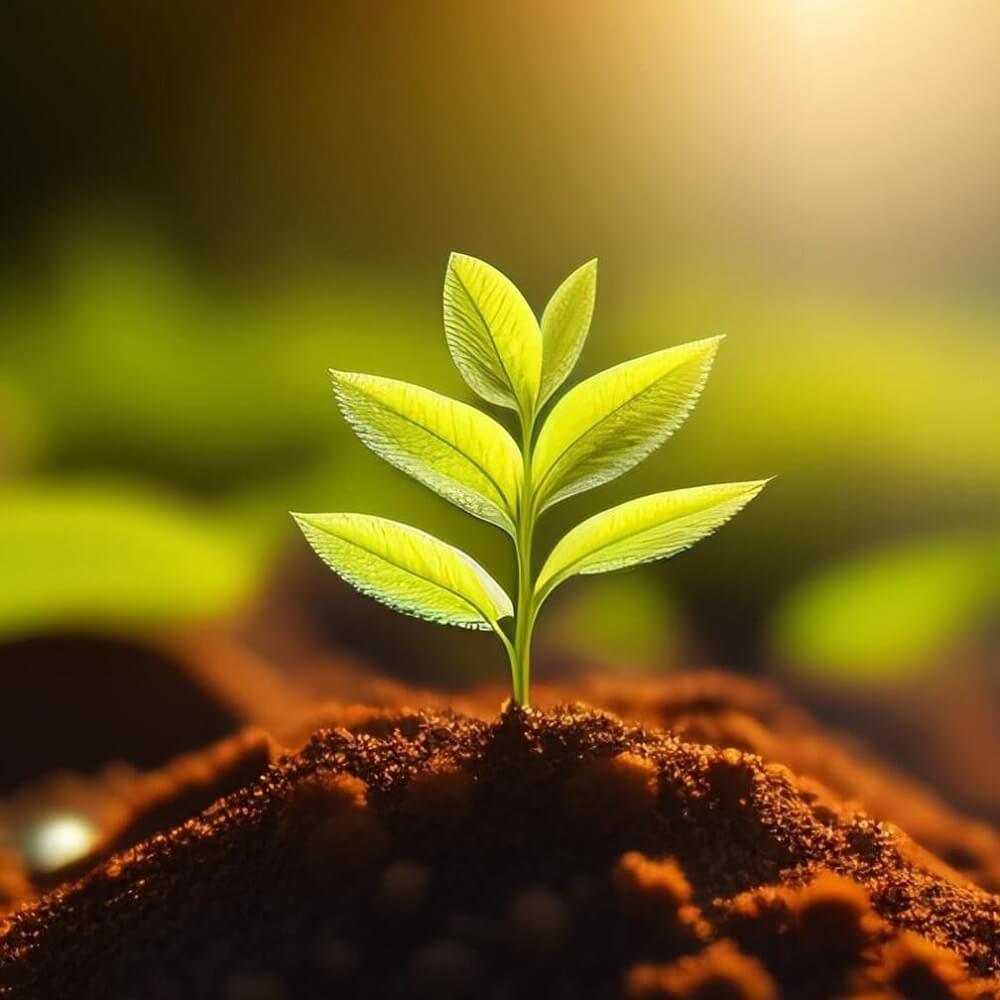
Our contributing author is a passionate advocate for eco-friendly living and sustainability. With a background in eco-life, they are dedicated to inspiring and empowering individuals to adopt environmentally conscious lifestyles. Through insightful articles, they share practical tips, innovative solutions, and thought-provoking perspectives to promote a greener, more sustainable world. Join them on the journey towards eco-smart living and discover how small choices can make a big impact. 🌱

